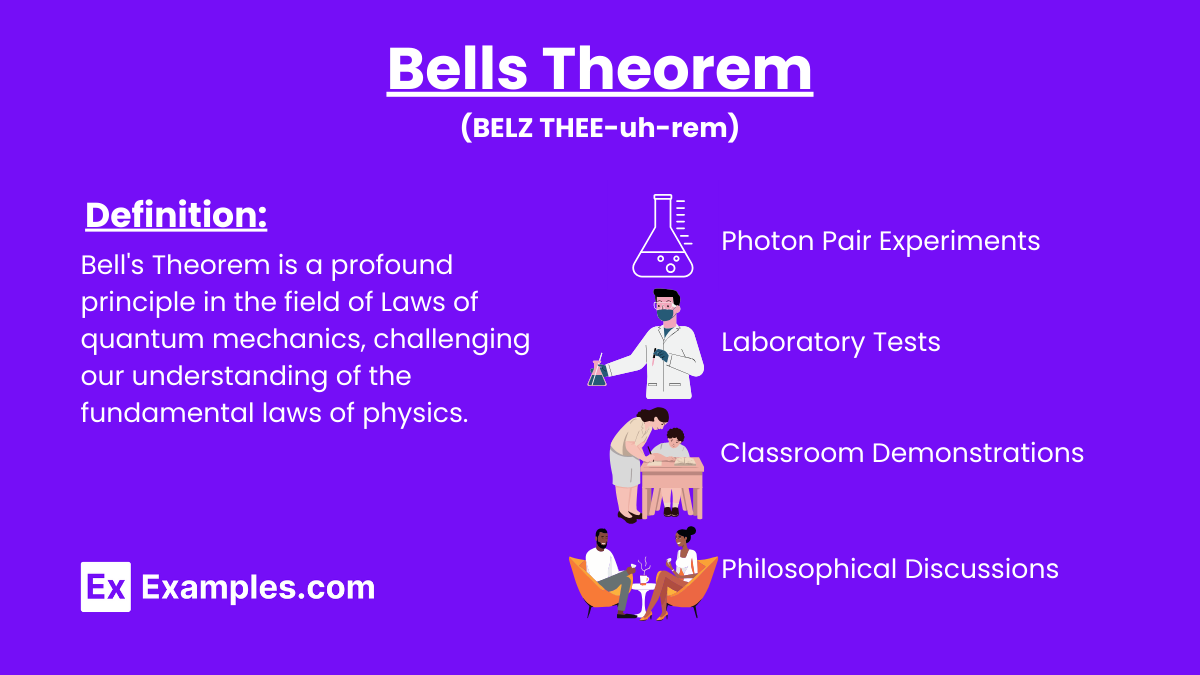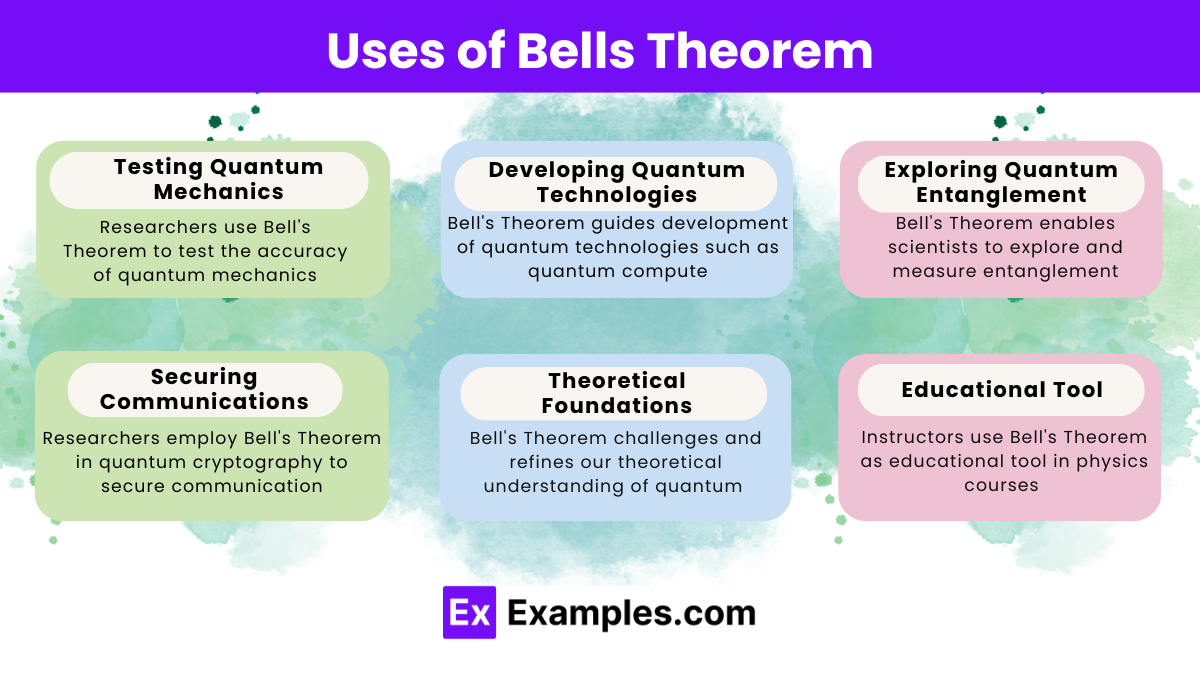What does Bell's Theorem primarily address?
The speed of light in a vacuum
The behavior of particles in a double-slit experiment
The limitations of local realism in quantum mechanics
The entropy of a black hole


Bell’s Theorem is a profound principle in the field of Laws of quantum mechanics, challenging our understanding of the fundamental laws of physics. Formulated by physicist John Stewart Bell in 1964, this theorem addresses the nature of reality proposed by quantum theory and the limitations of classical interpretations. Bell’s Theorem states: “No physical theory of local hidden variables can ever reproduce all of the predictions of quantum mechanics.”
Bell’s Inequality, a fundamental concept in quantum mechanics, offers a measurable method to test quantum theory’s predictions against those from classical physics theories based on local hidden variables. Physicist John Bell formulated this inequality in 1964. It serves as a critical tool for explore the nature of quantum entanglement and challenging the limits of classical interpretations of reality.
Local realism is a concept that is formalized to state and prove Bell’s theorem with Alice and Bob (the outcome of random sampling). Alice and Bob observed two observed values with detector settings: 𝐴(𝜆,𝛼) and 𝐵(𝜆,𝛽), respectively.
𝐸(𝑋)=∫Λ𝑋(𝜆)𝑝(𝜆)𝑑𝜆
Bell’s Theorem expresses itself through inequalities known as Bell inequalities. Researchers formulate these inequalities to compare quantum mechanics’ predictions with those expected from a theory based on local hidden variables. John Bell introduced the most famous of these inequalities in 1964. He typically express it in the context of measurements taken on pairs of entangled particles.
One of the most commonly referenced forms of Bell’s inequality in experimental physics is the Clauser-Horne-Shimony-Holt (CHSH) inequality, an extension of Bell’s original inequality. It’s used in experiments involve pairs of particles with two settings per particle and two possible outcomes per setting (often +1 or -1). The CHSH inequality is expressed as:
∣⟨𝐴𝐵⟩−⟨𝐴𝐵′⟩+⟨𝐴′𝐵⟩+⟨𝐴′𝐵′⟩∣≤2
Where:

Bell’s Theorem plays a crucial role in advance our understanding of quantum physics and has several practical applications:
It challenges classical notions of causality and locality, highlight the non-local nature of quantum entanglement.
Yes, experiments confirm its predictions, verify quantum mechanics’ accuracy.
Yes, its concepts can be explained in simpler terms, aiding understanding for non-experts.
It raises questions about causality and reality’s nature, inspiring philosophical debates.
Indirectly, it influences technology reliant on quantum principles, like compute.
Einstein’s EPR paradox spurred its development, questioning quantum mechanics’ completeness.
Some question underlying assumptions, while others interpret results differently.
It challenges classical intuitions, suggesting a deeper, non-local structure to reality.
John Bell formulated it to test quantum mechanics against classical theories.
Yes, it challenges local realism, but doesn’t necessarily violate relativistic principles.
Text prompt
Add Tone
10 Examples of Public speaking
20 Examples of Gas lighting
What does Bell's Theorem primarily address?
The speed of light in a vacuum
The behavior of particles in a double-slit experiment
The limitations of local realism in quantum mechanics
The entropy of a black hole
Which of the following best describes local realism?
Objects have definite properties independent of measurement
The speed of light is variable
Quantum states can be predetermined
Measurement affects only the observed object
What does a violation of Bell's inequalities suggest?
Support for classical mechanics
Confirmation of local hidden variable theories
Evidence for quantum entanglement
Proof of faster-than-light communication
What type of experiment is used to test Bell's Theorem?
Double-slit experiment
EPR (Einstein-Podolsky-Rosen) experiment
Stern-Gerlach experiment
Aspect experiment
Which of the following is a key prediction of quantum mechanics that Bell's Theorem tests?
The uncertainty principle
Wave-particle duality
The violation of local hidden variable theories
The conservation of momentum
In Bell's Theorem, what does the term "hidden variables" refer to?
Variables related to quantum measurement outcomes
Unobservable factors that determine particle properties
Variables that measure quantum fluctuations
Observable properties of entangled particles
What experimental setup is commonly used to test Bell's Theorem?
Mach-Zehnder interferometer
Polarizer and analyzer
Beam splitter
Photoelectric effect setup
Which scientist is primarily associated with the formulation of Bell's Theorem?
Niels Bohr
Albert Einstein
John Bell
Erwin Schrödinger
What is a key result from experiments that test Bell's Theorem?
Confirmation of classical mechanics
Verification of local hidden variable theories
Evidence supporting quantum entanglement and non-locality
Proof of deterministic quantum mechanics
Which inequality is commonly associated with Bell's Theorem?
Heisenberg's uncertainty principle
Bell's inequality
Schrödinger's equation
Planck's constant
Before you leave, take our quick quiz to enhance your learning!

